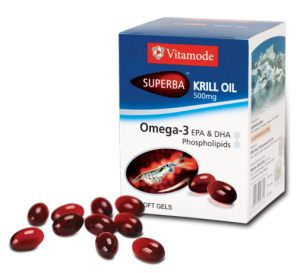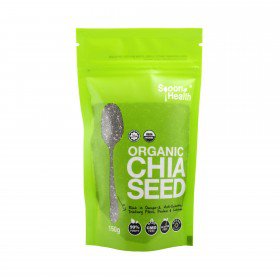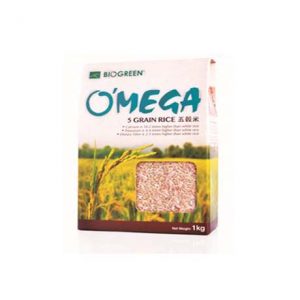Did you know that by the time a woman reaches 65, she has a 1 in 3 chance of developing coronary heart disease (CHD)? Did you also know that this deadly disease kills 2.5 times more women than all cancers combined? And that in a developed country like The United States of America, more women than men have died of cardiovascular disease every single year from 1984?
It is well known that before menopause, women are protected to a large extent from getting heart disease by hormones such as oestrogen. Once this protection has gone after menopause, the risk of getting cardiovascular disease is similar to that of men.
If you ask anyone on the street what he or she thinks is the main cause of death for women, the most popular answer is likely to be breast cancer. In his or her mind, heart disease is a man’s disease just as breast cancer is a woman’s disease.
Table of Contents
So why does heart disease not get as much publicity as breast cancer?
Heart disease affects postmenopausal women, especially the elderly, whereas breast cancer sufferers are mostly women who are working and many of them hold high profile careers. When someone with breast cancer dies, it provokes a very strong emotion.
Breast cancer campaigns in general have been very well planned and executed. The dedicated and passionate people who have put breast cancer in the forefront have done an excellent job. Their task has been made easier since the target audience is younger women who represent lucrative commercial markets. Therefore, seeking funds has been relatively easy.
However, let us get this straight. This is not an attempt to downplay the importance and danger of breast or other cancers. What I wish to put across is that ignorance of the main killer in women is widespread and is itself a disease with no imminent cure.
Whilst we now know that heart disease affects both men and women in a devastating manner, there are a few differences that by and large make the management of heart disease in women a real challenge:
- Unlike men, the symptom presentation for women is not typical of cardiovascular disease. Women,
in general, have symptoms which are less straightforward, making diagnosis difficult. Stable angina (chest pain on exertion) is the most frequent initial manifestation of CHD in women whereas heart attack and sudden death are usually associated with men. - Exercise ECG testing has higher false positive rate (i.e. wrongly labeling the test as abnormal) in women than in men
- Women do not do as well as men after a heart attack. There is a higher rate of death which is attributed to late presentation to the hospital as many of them have symptoms which are not typical. The average age of presentation for heart attack in women is about 10 years older; therefore, influencing the survival outcome.
So how does a woman prevent herself from getting CHD?
The short answer: Learn what causes CHD and what you can do to reduce the risks.
Well known risk factors for CHD are smoking, hypertension, diabetes, abnormal cholesterol levels, lack of exercise and obesity. Unfortunately, other factors such family history and old age are not so easily changed. Whilst it is true that young women rarely get CHD because of the protective effect of her female hormones, there are exceptions especially if they have the risk factors mentioned earlier.
Some believe that taking hormone replacement therapy (HRT) after menopause would help to prevent CHD. Unfortunately, there has not been any conclusive evidence of its benefits. In fact, one study found an insignificant increase in the incidence of heart disease in those on HRT.
But what about aspirin – the ‘wonder drug’? For centuries, aspirin has been used as a painkiller. Only decades ago it was discovered that a small dose of aspirin could thin the blood and both treat and prevent heart attacks. Aspirin is now a standard treatment for those with established CHD.
However, the use of aspirin in those without CHD merely as a primary prevention is controversial. In fact, most schools of thought discourage its routine use unless a particular individual has multiple risk factors of getting CHD such as diabetes, hypertension and smoking – but even then it would be best to discuss with the doctor on a case-to-case basis. So heart disease affects men and women pretty much equally. Take note of the following 5 heart-healthy steps whether you have an XY or XX chromosome:
5 Simple Tips to Keep Your Heart Healthy
1. Eat a proper diet
Eat a healthy and balanced diet with a high intake of fruits and vegetables. Avoid the 3Gs – Gula, Garam and Goreng.
2. Hit the Gym
Try to do 20-30 minutes of continuous exercise – brisk walking, jogging, cycling or swimming – most days in a week. If you are already doing it, then do a bit more.
3. Slim Down
Maintain a healthy weight by constantly watching what you eat and exercise regularly to burn the excess calories.
4. Put Down Those Cigarettes
There are cheaper ways to harm yourself! The 4,000 over chemical poisons in a cigarette can and will predispose you to getting deadly diseases such as heart attack, stroke, gangrene, lung cancer, stomach cancer and many others. If you have friends who are recalcitrant smokers, look for new ones.
5. Visit Your Doctor Regularly
Half of the patients who come in with a heart attack did not have any prior symptoms. For them, the first sign that something was wrong was the heart attack itself. Take charge of your health by visiting your doctor regularly.
Still Need Help?
Don’t worry! Here at 100comments, we have plenty of products to help improve your health. If you’re not satisfied with the examples below, you can always search through our catalogs to find something that suits you better.
Krill are prawn-like creatures that are approximately 1 to 6 centimeters long. They live in oceans off the West coast of Vancouver Island, Russia, Ukraine and Japan, feeding mainly on plankton, which are the actual Omega 3 factories. Krill are near the bottom of the food chain and are eaten by whales, seals, penguins, squids and fishes.
Spoon Health Organic Chia Seed
Spoon Health’s Chia Seed are high quality, certified halal and completely organic. No pesticides. No fillers. No spoiled seeds. Which means there’s peace of mind – in every spoonful.
Biogreen O’mega 5 Grain Rice is made of 5 types of premium grains; it is rich in taste and easily digested, making it a definite plus for health to the whole family. High-energy, low-calorie. Dietary Fibre is 2.5 times higher than white rice. High fiber helps to control blood sugar, improve blood pressure and constipation problems. Calcium is 10.2 times higher than white rice. Calcium helps to strengthen bones and teeth density.Omega 3 helps to improve skin texture and enhance skin complexion. Omega 6 helps to protect the heart, reduce tissue inflammation. Iron helps to prevent and improve anemia problems.




























